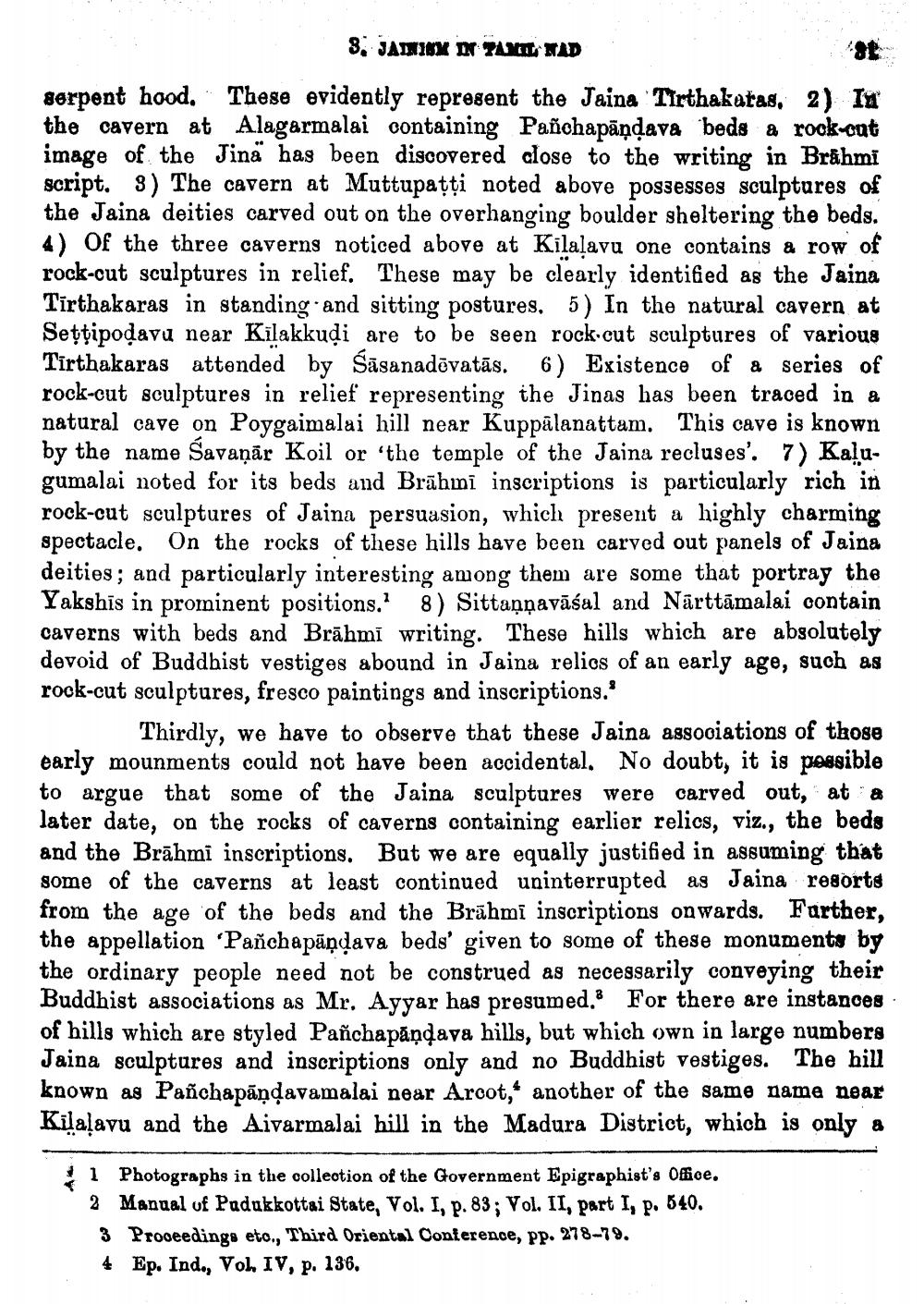________________
3. JAINISM IN TAMIL NAD
wade
serpent hood.
These evidently represent the Jaina Tirthakaras, 2) In the cavern at Alagarmalai containing Pañchapaṇḍava beds a rock-cut image of the Jina has been discovered close to the writing in Brahmi script. 3) The cavern at Muttupatti noted above possesses sculptures of the Jaina deities carved out on the overhanging boulder sheltering the beds. 4) Of the three caverns noticed above at Kilalavu one contains a row of rock-cut sculptures in relief. These may be clearly identified as the Jaina Tīrthakaras in standing and sitting postures. 5) In the natural cavern at Seṭṭipoḍavu near Kilakkudi are to be seen rock-cut sculptures of various Tīrthakaras attended by Sasanadēvatās. 6) Existence of a series of rock-cut sculptures in relief representing the Jinas has been traced in a natural cave on Poygaimalai hill near Kuppalanattam. This cave is known by the name Savanar Koil or 'the temple of the Jaina recluses'. 7) Kalugumalai noted for its beds and Brahmi inscriptions is particularly rich in rock-cut sculptures of Jaina persuasion, which present a highly charming spectacle. On the rocks of these hills have been carved out panels of Jaina deities; and particularly interesting among them are some that portray the Yakshis in prominent positions. 8) Sittanṇavāśal and Närttamalai contain caverns with beds and Brahmi writing. These hills which are absolutely devoid of Buddhist vestiges abound in Jaina relics of an early age, such as rock-cut sculptures, fresco paintings and inscriptions."
Thirdly, we have to observe that these Jaina associations of those early mounments could not have been accidental. No doubt, it is possible to argue that some of the Jaina sculptures were carved out, at a later date, on the rocks of caverns containing earlier relics, viz., the beds and the Brahmi inscriptions. But we are equally justified in assuming that some of the caverns at least continued uninterrupted as Jaina resorts from the age of the beds and the Brahmi inscriptions onwards. Further, the appellation 'Pañchapaṇḍava beds' given to some of these monuments by the ordinary people need not be construed as necessarily conveying their Buddhist associations as Mr. Ayyar has presumed. For there are instances of hills which are styled Pañchapāṇḍava hills, but which own in large numbers Jaina sculptures and inscriptions only and no Buddhist vestiges. The hill known as Pañchapāṇḍavamalai near Arcot, another of the same name near Kilalavu and the Aivarmalai hill in the Madura District, which is only a
1 Photographs in the collection of the Government Epigraphist's Office. 2 Manual of Pudukkottai State, Vol. I, p. 83; Vol. II, part I, p. 540.
3 Proceedings etc., Third Oriental Conference, pp. 278-79.
4 Ep. Ind., Vol. IV, p. 136.




